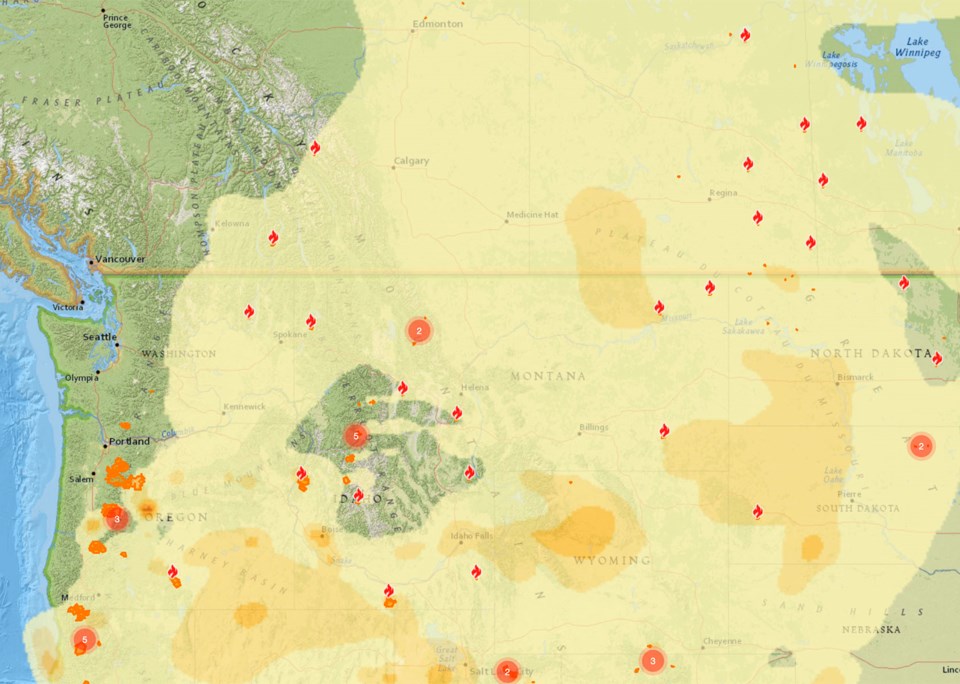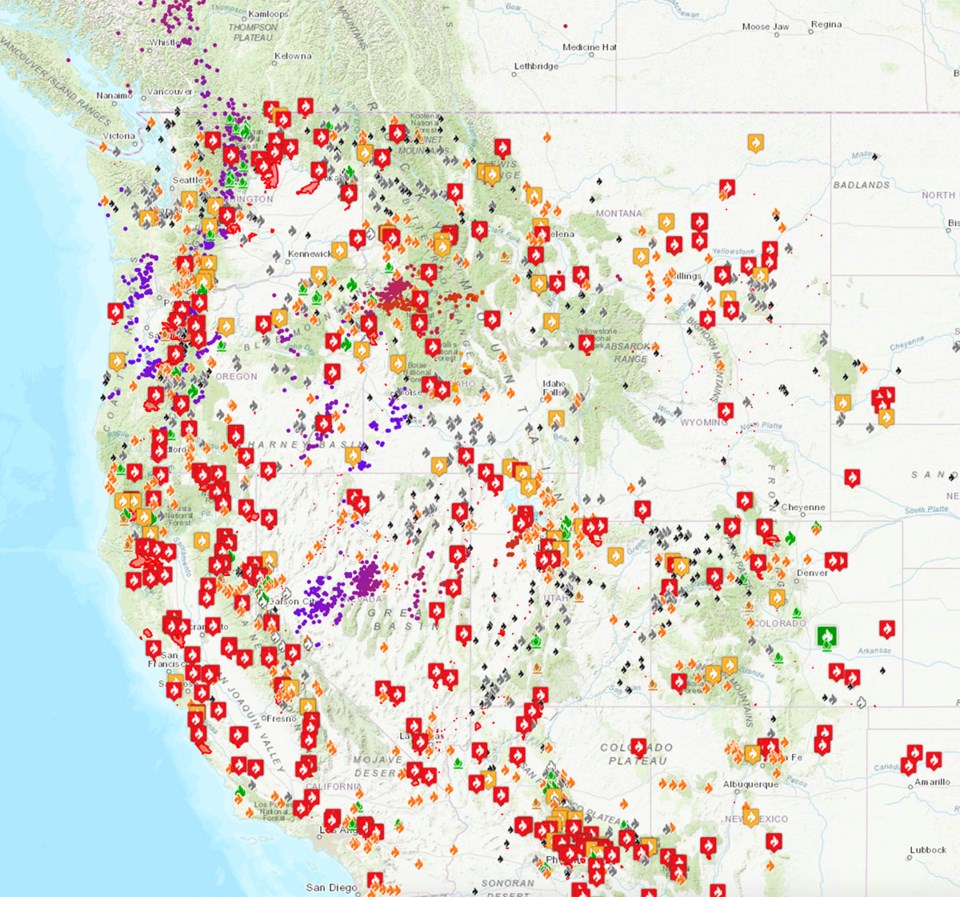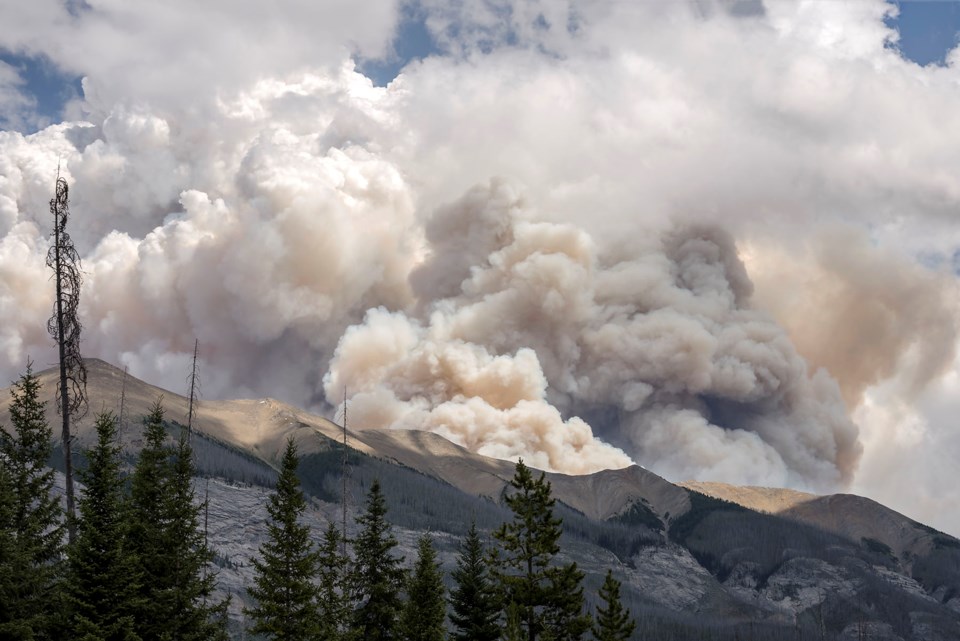With more than 80 large fires currently raging throughout California, Washington, Oregon and the rest of the U.S. Pacific Northwest, smoke has entered the upper atmosphere and spread throughout the U.S. and Canada, creating hazy conditions in some areas and bringing outright smoke into southwestern Saskatchewan.
That prompted Environment Canada to issue a special air quality statement on Saturday morning, covering much of this part of the province, including the Moose Jaw area.
The warning states thicker smoke will be carried into extreme southwestern Saskatchewan this evening and will produce noticeably smokey conditions, with air quality expected to become very poor in some locations.
Smokiness will be seen throughout the south on Saturday and Sunday -- though not as dense as in the southwest corner -- but the low-pressure system will move out of the province during the day Sunday and air quality will gradually improve.
The Air Quality Health Index for the southern part of the province is expected to hit three (low risk) for the Regina area and four (moderate risk) for Swift Current and area, with Moose Jaw falling in between.
 How the spread of smoke from the west coast wildfires will look as of Sunday afternoon. (firesmoke.ca)
How the spread of smoke from the west coast wildfires will look as of Sunday afternoon. (firesmoke.ca) A look at the number of wildfires currently burning in the United States as of 1 p.m. on Saturday afternoon. (www.fireweatheravalanche.org)
A look at the number of wildfires currently burning in the United States as of 1 p.m. on Saturday afternoon. (www.fireweatheravalanche.org)Individuals may experience symptoms such as increased coughing, throat irritation, headaches or shortness of breath. Children, seniors, and those with cardiovascular or lung disease, such as asthma, are especially at risk.
People with lung diseases, such as asthma and COPD, can be particularly sensitive to air pollution. They will generally experience more serious health effects at lower levels. Pollution can aggravate their diseases, leading to increased medication use, doctor and emergency room visits, and hospital visits.
Stay inside if you have breathing difficulties. Find an indoor place that's cool and ventilated. Using an air conditioner that cools and filters air may help. If you open the windows you may let in more polluted air. If your home isn't air-conditioned, consider going to a public place (library, shopping mall, recreation centre) that is air-conditioned, while following all COVID-19 rules and regulations.
Call HealthLine 811 for advice on health risks, symptoms and precautions associated with air quality. Visit www.airhealth.ca for information on how to reduce your health risk and your personal contribution to pollution levels, as well as for current and forecast AQHI values.


.png;w=120;h=80;mode=crop)

